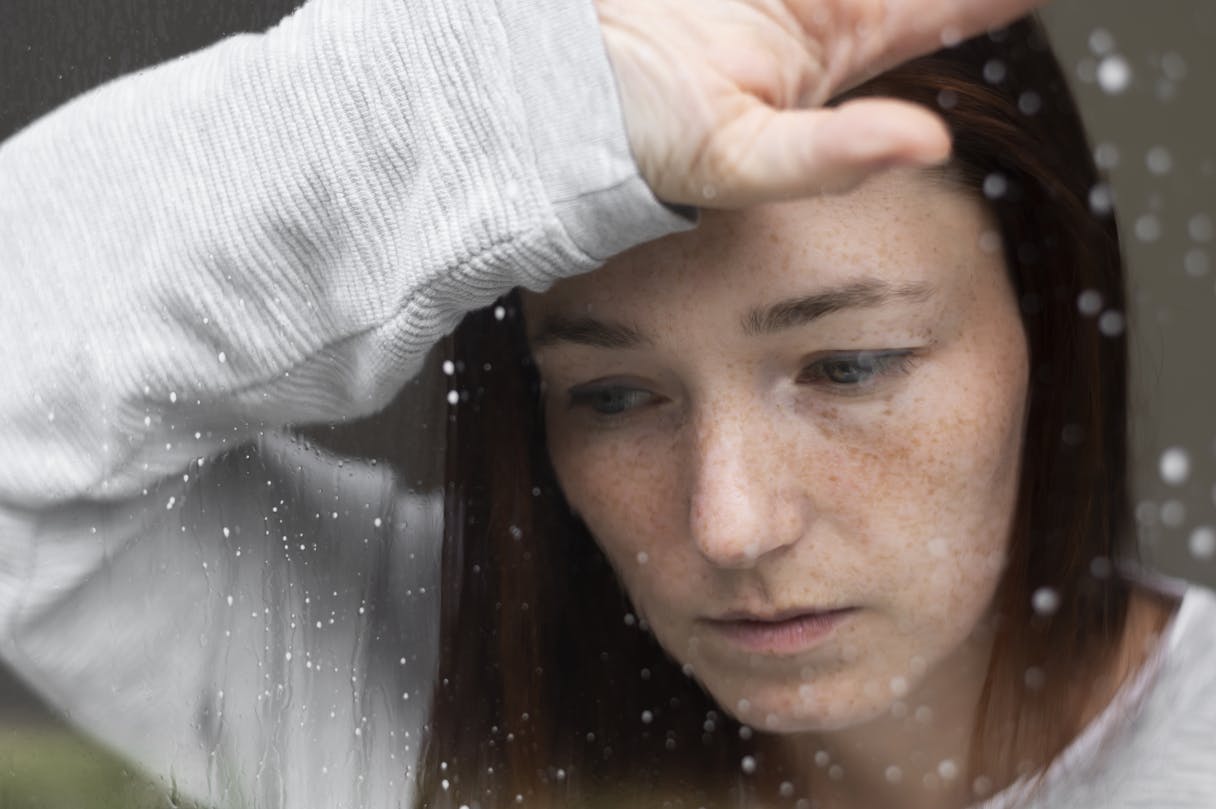Identifying Depression: Signs and Symptoms to Watch For

Depression is a complex mental health condition that can affect anyone, regardless of age, gender, or background. Recognizing the signs and symptoms of depression is the first step toward seeking help and finding relief.
In this guide, we'll explore the differences between feeling down and major depressive disorder (MDD), delve into the core symptoms of clinical depression, discuss the physical, emotional, and cognitive signs, explore behavioral indicators, and identify common risk factors and triggers.
By the end, you'll have a clearer understanding of MDD and when and how to seek professional support.
Feeling depressed vs. having MDD
Feeling down occasionally is a regular part of life, but when those feelings persist and significantly impact daily functioning, it might be a sign of major depressive disorder, or MDD.
Also known as clinical depression, MDD transcends situational bouts of sadness, grief, or boredom. Its defining characteristic is the persistence and pervasiveness of symptoms that affect how you feel, think, and act.

Core symptoms of clinical depression
Depression can manifest in various ways, but the primary symptoms indicative of MDD include:
- Continuous sadness or emptiness: It’s common to experience a deep sadness or emptiness that persists, lasting for weeks or even months.
- Loss of interest or pleasure: Hobbies, social interactions, and even intimate relationships no longer bring satisfaction.
Recognizing these symptoms early on is critical to seeking help.
Physical signs of depression
A depressive disorder's impact isn't solely emotional. It can also affect your physical well-being in the following ways:
- Changes in sleep patterns: Insomnia or oversleeping are common for people with major depressive disorder.
- Appetite or weight changes: Significant shifts in appetite or eating habits, leading to weight gain or loss, can occur.
- Fatigue or low energy: Simple tasks may feel overwhelming, and even getting out of bed can seem impossible.
Each person will experience these physical symptoms differently. For example, one person may struggle to fall asleep or stay asleep, while another may find they still feel fatigued despite sleeping excessively.
Emotional and cognitive signs of depressive disorders
Other symptoms of these mental health conditions relate to your mood and your thought processes.
- Feelings of worthlessness or excessive guilt: Individuals with clinical depression often experience feelings of worthlessness or excessive guilt, even when there's no rational basis for these emotions.
- Negative self-talk: Internal dialogues can become overwhelmingly negative and self-critical, even in individuals who were once confident and self-assured.
- Difficulty concentrating or making decisions: Depression can impair cognitive function, making it challenging to concentrate, make decisions, or remember information.
- Thoughts of death or suicide: In severe cases, depression may lead to suicidal thoughts or thoughts of death, and it's vital to seek help immediately if you or someone you know is experiencing this.
If you need immediate help: Call 911 if you’re having a mental health emergency, text HOME to 741-741 if you're in emotional distress and need immediate support, or call 988 for the National Suicide Prevention Hotline.
It’s important to be aware of these signs of depression, as the effects these emotional and cognitive symptoms can have could reinforce feelings of hopelessness and despair.
Behavioral signs of MDD and similar disorders
The symptoms of clinical depression that may be most noticeable to others are changes in your behavior, including:
- Withdrawal from social activities: A desire to isolate oneself is common during depressive episodes.
- Irritability or restlessness: While depression is typically associated with sadness, some individuals may experience irritability, agitation, or restlessness instead.
- Forced happiness: Some individuals may try to hide their symptoms by overcompensating with exaggerated displays of happiness.
These signs are either indicative of internal turmoil or are an attempt to mask the emotional pain someone with a depressive disorder can experience.
Risk factors and triggers
Understanding the risk factors and triggers for MDD and similar conditions can provide context when there’s an onset of depression symptoms.
Genetics and family history
A family history of depression or other mood disorders increases the risk of developing a condition like major depressive disorder. While genetics play a role, environmental factors also contribute to the condition's onset.
Life events and stressors
Traumatic events, significant life changes, chronic stress, or ongoing adversity can trigger or aggravate symptoms of depression. Loss of a loved one, financial difficulties, or relationship problems could also contribute to the development of this type of mental health condition.

When and how to seek help for depression
If you experience the persistence of several of these symptoms for two or more weeks, it may be time to consider consulting a mental health professional. Recognizing the need for support is the first step toward managing a depressive episode.
Recognizing the need for professional support
If you're experiencing symptoms of depression that interfere with your daily life, seek help from a therapist, counselor, or licensed prescriber. These qualified mental health professionals can assess your symptoms and start providing treatment.
Acknowledging that you may need mental health support is brave. It shows a readiness to engage with your well-being and a willingness to explore potential treatment options.
Steps to take when starting treatment for depression
Treatment for MDD often involves a combination of therapy, medication, lifestyle changes, and support from loved ones. Work closely with your healthcare provider to develop a personalized mental health treatment plan that addresses your needs and goals.
Resources available for general and crisis support
There are numerous resources available for individuals experiencing depression. Here are a few recommendations you might find helpful:
- Online support groups like the Anxiety and Depression Association of America’s major depressive disorder (MDD) support community, which provides a place to share and learn.
- The National Alliance on Mental Illness’s family support group, which can help loved ones understand mental health conditions.
- The 24/7 Suicide & Crisis Lifeline, which can be reached by calling or texting 988 if someone is experiencing suicidal thoughts or an emotional crisis.
- The Veterans Crisis Line, which is available for veterans seeking support by texting 838255, dialing 988 and pressing 1, or starting an online chat.
In a life-threatening emergency: Dial 911 or seek immediate assistance at the nearest ER.
Whether you need immediate crisis intervention or ongoing support, these hotlines and websites can provide valuable resources and assistance.
The importance of early intervention
Timely intervention can help relieve symptoms and improve outcomes. By recognizing signs of depression and being willing to seek treatment, you can equip yourself with the tools and support needed to manage MDD or a similar disorder.
If you're experiencing prolonged depression or think you may have MDD, know that you're not alone, and help is available. The first step to feeling better is reaching out. We offer affordable online mental health services, including therapy, medication management, and ongoing support. With Cerebral, you can get help managing depressive episodes from the convenience and comfort of your home.

By recognizing the signs and symptoms of depression and taking proactive steps to seek help, you can reclaim your life and get back to filling it with hope, purpose, and fulfillment.
Images by Drazen Zigic and pressfoto on Freepik.
The information in this blog is provided as a general educational resource only, and is not to be used or relied on for any diagnostic or treatment purpose. This information should not be used as a substitute for professional diagnosis and treatment and does not create any patient-physician relationship between you and Cerebral. Please consult your health care provider before making any health care decisions or to get guidance about a specific medical condition.

The Benefits of Walking to Help Depression

Retirement and Depression: Why It Happens and How to Cope

Understanding the Different Types of Depression

Call 911 if you’re having a
mental health emergency
Text Home to 741-741 if you're in emotional
distress and need immediate support
Call or text 988 Suicide &
Crisis Lifeline. Chat service
is available at 988lifeline.org.